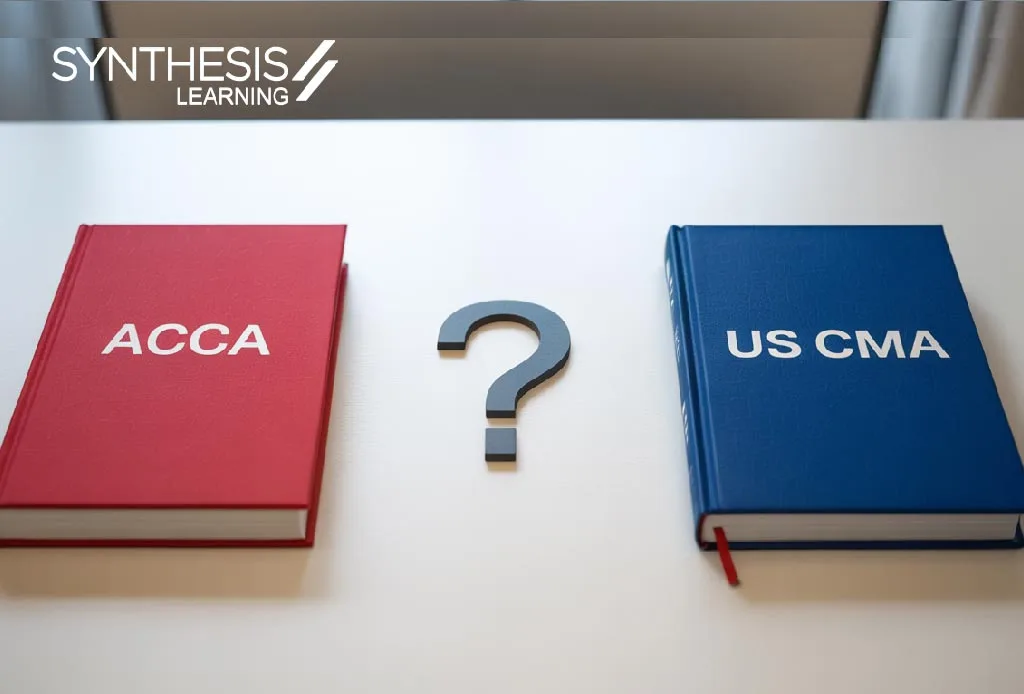US CMA Syllabus Part 2: Strategic Financial Management – Detailed Syllabus
The Certified Management Accountant qualification, offered by the Institute of Management Accountants (IMA) is globally recognized for its focus on Financial Planning & Analysis, Strategic Management & Decision Making. CMAs are trained to see beyond the data, translating numbers into high-level strategic insights.
Valued by top employers worldwide, this qualification equips professionals with the rich expertise in finance, management accounting, decision making & other key business skills. Founded in 1919, the IMA has a strong global presence with over 140000 members across 150+ countries. The CMA qualification is divided into two parts: Part 1 and Part 2.
In this blog, we will explore the exam format and the detailed syllabus for US CMA Part 2: Strategic Financial Management
The US CMA Part 2 covers 6 major topics, which are:
- Financial Statement Analysis (20%)
- Corporate Finance (20%)
- Business Decision Analysis (25%)
- Enterprise Risk Management (10%)
- Capital Investment Decisions (10%)
- Professional Ethics (15%)
The Exam Format for Part 2 :
Duration: 4 hours per exam
Sections:
Multiple-Choice Questions (MCQs) – 100 questions
Essay Questions – 2 scenario-based essay questions
Total Score: 500 points
Passing Score: 360 points
Question Type:
MCQs – Single correct answer
Essay – Includes problem-solving and calculations.
The essay section unlocks only if you score at least 50% in the multiple-choice section, ensuring a foundational understanding before progressing to analytical writing
What Is the US CMA Syllabus Part 2 All About?
A. Financial Statement Analysis (20%)
The Financial Statement Analysis section is a cornerstone of the CMA exam and requires candidates to analyze financial data to make informed decisions:
1. Comparative Financial Statement Analysis: Candidates will have to master the understanding of common-size financial statements and common base-year statements and analyze financial trends.
2. Financial Ratios: Key ratios covered in this topic are liquidity, leverage, activity, and profitability ratios. You’ll need to be comfortable calculating and interpreting these ratios to evaluate a company’s performance making use of these ratios.
3. Profitability Analysis: Analyze the profitability the company has derived during the period by analyzing its return on assets, return on equity, revenue reorganisation policies, and expenses to assess profitability.
4. Special Issues: Learn about the impact of foreign exchange rate changes, inflation, changes in accounting treatments, and the quality of earnings on a company’s business activity.
This topic accounts for 15% of total exam marks
B. Corporate Finance (20%)
The Corporate Finance section will challenge your knowledge of managing a company’s capital and financing activities. Which are:
1. Financial Risk and Return: Learn how to calculate returns and understand the types of financial risks that influence a company’s decisions.
2. Long-term Financial Management: This covers the term structure of interest rates, types of financial instruments, and how to value them. You’ll also be learning advanced investment appraisal.
3. Raising Capital: Understanding how companies raise capital through financial markets, initial public offerings, debt, and lease financing, and also understanding the cost of capital associated with it.
4. Working Capital Management: get to know how to effectively manage cash, marketable securities, receivables, and inventory. The effective management of all these components of working capital results in efficient working capital management.
5. Corporate Restructuring: Includes mergers, acquisitions, and international finance, which include international acquisition concepts like exchange rates and managing transaction exposure.
This topic accounts for 20% of total exam marks
C. Business Decision Analysis (25%)
In this section, candidates need to demonstrate their ability to make strategic business decisions based on cost, volume, and profitability analysis. Topics include:
1. Cost/Volume/Profit Analysis: Be prepared to conduct breakeven analysis & forecast performance & profits at different operational levels.
2. Marginal Analysis: This involves an in-depth understanding of sunk costs, marginal costs, and the decision-making process for special orders, pricing, and whether to make or buy certain products.
3. Pricing: Master pricing methodologies, including pricing by market structure, target costing, and considerations based on product life cycle and market structure.
This is one of the largest sections in Part 2, and its focus on practical business applications makes it essential for aspiring financial professionals. This topic accounts for 25% of the total exam marks
D. Enterprise Risk Management (10%)
Risk management is critical for any organization, and the CMA exam ensures that candidates understand:
1. Types of Risk: Identify and assess various types of business risks.
2. Risk Management: Risk management process, risk appetite, risk tolerance, etc.
3. Risk Mitigation: Develop strategies to mitigate those risks and manage uncertainties within the business environment.
This topic accounts for 10% of the total exam marks
E. Capital Investment Decisions (10%)
This section focuses on evaluating long-term investment decisions. You’ll need to be proficient in:
1. Capital Budgeting Process: Understand the stages of capital budgeting, from identifying cash flows to considering tax implications.
2. Capital Investment Analysis Methods: Learn how to evaluate investments using Net Present Value (NPV), Internal Rate of Return (IRR), payback periods, and sensitivity analysis.
This topic accounts for 10% of the total exam marks
F. Professional Ethics (15%)
Ethics is at the heart of the management accounting profession. The CMA Part 2 exam emphasizes the importance of ethical behaviour through:
1. Business Ethics: Understand the ethical issues management accountants and financial professionals face.
2. The IMA code of ethics: The Institute of Management Accountants (IMA) has established an ethical framework called the IMA Statement of Ethical Professional Practice, which guides professional behaviour.
3. Ethical Considerations for Organizations: This involves learning about creating an ethical culture within organizations, promoting sustainability, and social responsibility, and ensuring legal compliance
Ethical conduct is non-negotiable in financial management, and this section ensures you’re equipped to make decisions that are not only profitable but also morally sound. This topic accounts for 10% of total exam marks
Conclusion
The US CMA Exam marks are your gateway to a successful career in financial planning, performance management, and analytics. With thorough coverage of external financial reporting, cost management, budgeting, and more, this exam tests your ability to apply real-world financial strategies.




